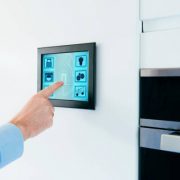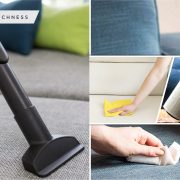Are you in the process of designing a new classroom? If so, you’re probably looking for expert tips and advice. Well, you’ve come to the right place! In this blog post, we will discuss everything from layout to color schemes. We’ll also provide helpful tips on how to make your classroom both functional and attractive. So whether you’re just starting out or you’re looking to make some changes, read on for the best tips and tricks for designing the perfect classroom! Let’s get started
1) Desks & Chairs
When it comes to classroom desks and chairs, there are a few things to consider. First and foremost, you want to make sure that the desks and chairs are comfortable and fit the students properly. There are many different types of desks for schools, so you should choose ones that are durable and can withstand wear and tear. Another thing to consider when choosing classroom desks and chairs is the layout of the room. If you have a large class, you may want to consider choosing desks that can be arranged in rows. Alternatively, if you have a small class, you may want to choose desks that can be arranged in a U-shape or other shape that allows for more interaction between students.
When it comes to classroom chairs, there are a few different types to choose from. The most common type of chair is the standard desk chair, which is perfect for both adults and children. Another option is the stool, which is perfect for younger students who are not quite big enough for a desk chair. And finally, there is the bench, which can be used in place of desks for larger classes.
2) Lighting
When designing your classroom, it’s important to consider the lighting. You want to make sure that the room is well-lit so that students can see clearly. However, you also don’t want the room to be too bright, as this can be a distraction. The best way to achieve the perfect balance is to use a combination of natural and artificial lighting. For example, you could install skylights or large windows to let in natural light during the day. Then, at night or on cloudy days, you could use overhead lights or lamps.
Another thing to consider when it comes to lighting is the type of bulbs you use. LED bulbs are a great option because they are energy-efficient and long-lasting. However, they can be more expensive upfront. If you’re on a budget, CFL bulbs are a good alternative.
3) Color Scheme
The color scheme of your classroom can play a big role in how it feels. This is because different colors can affect our moods in different ways. For example, blue is known to be calming, while green is associated with growth and renewal. When choosing a color scheme for your classroom, it’s important to consider the overall tone you want to set. Do you want it to be a relaxing space where students can focus? Or do you want it to be a vibrant and exciting space that encourages creativity? Once you’ve decided on the overall tone, you can start choosing specific colors. Just remember to use colors that compliment each other and create a cohesive look.
4) Storage & Organization
It’s important to design your classroom with storage and organization in mind. You’ll need plenty of storage space for textbooks, supplies, and other materials. You’ll also need areas for students to store their belongings so they don’t have to carry them around all day. In addition to traditional storage solutions such as cabinets and shelves, you may also want to consider using storage bins and baskets or installing hooks on the walls for coats and backpacks. Or, you could also create a designated space for each student’s belongings. For example, you could assign each student a locker or cubby.
When it comes to organization, there are a few things to keep in mind. First, you’ll want to create a system for organizing textbooks and other materials. This will make it easier for students to find what they need and put it away when they’re finished. Second, you’ll want to create a system for labeling things. This will help students know where everything goes and make it easier for them to find what they need. Finally, you’ll want to make sure there’s a place for everything. This includes things like pencils, paper, and other supplies. By having a designated spot for everything, students will know where to find it and put it away when they’re done.
5) Technology
With technology becoming more prevalent in classrooms, it’s important to include it in your design plans. There are a few things to consider when it comes to incorporating technology into your classroom. First, you’ll need to decide what type of technology you want to use. This could include computers, tablets, projectors, or even smart boards. Once you’ve decided on the type of technology you want to use, you’ll need to figure out how to integrate it into your classroom. For example, you’ll need to decide where to put the computers or how to incorporate the use of tablets into lesson plans. You’ll also need to make sure you have the proper cables and other accessories needed for using the technology. Finally, you’ll need to create a system for managing and storing the technology when it’s not in use. This could include charging stations, lockers, or carts.
Technology can be a great addition to any classroom. By following these tips, you can make sure it’s integrated seamlessly into your design plans.
Designing a classroom is no easy task. It requires careful consideration of many different factors in order to create an environment that is both conducive to learning and comfortable for students. In this article, we have outlined some important tips for designing the perfect classroom. We hope that you find these tips helpful and that they help you create a learning space that meets the needs of your students.






















